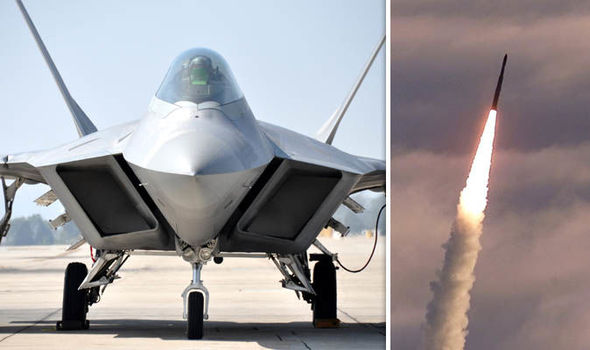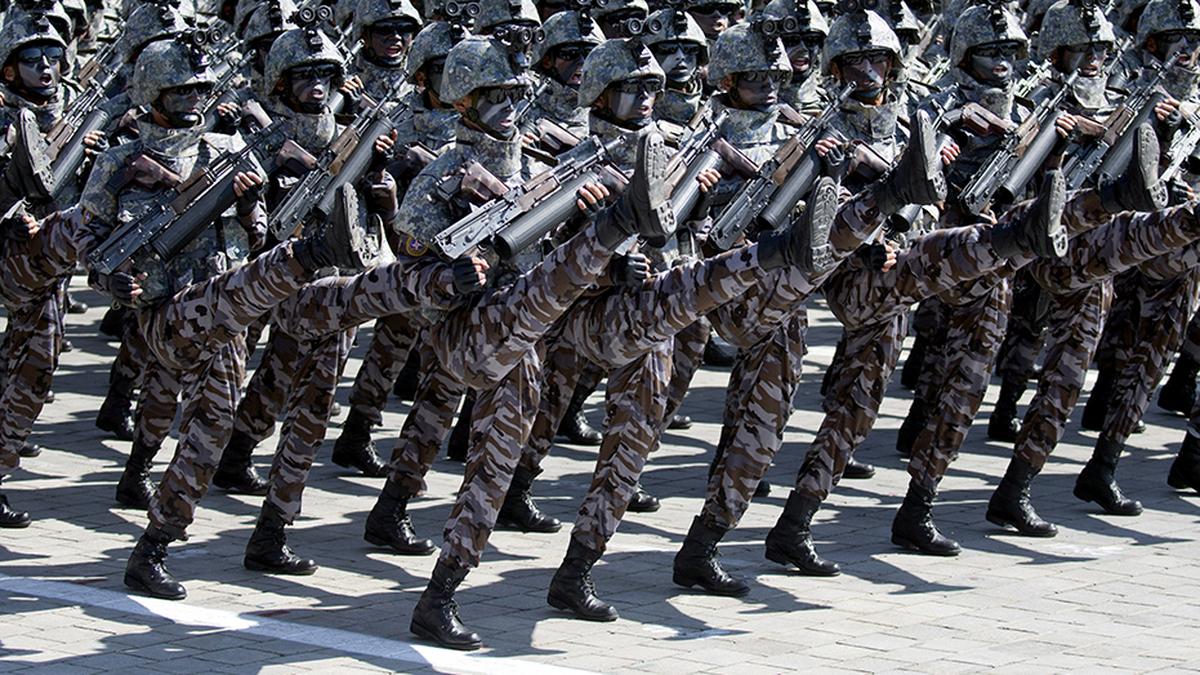Trump gives Lockheed Martin $1BILLION to build WORLD’S DEADLIEST MISSILE
Tue 24 Apr 2018, 12:35:27

DEFENCE chiefs in the United States are to invest nearly $1billion to develop a prototype hypersonic missile as Washington scrambles to keep pace with more advanced programmes boasted by Russia and China.
Beijing and Moscow both claim to have successfully tested their own versions of the terrifying new weapons, which they say are capable of travelling at many times the speed of sound and evading all existing missile defence systems.
In response to the growing threat, the US Air Force has awarded a £665million ($928million) contract to aerospace giant Lockheed Martin to build their own version.
A United States Air Force spokeswoman said: “This effort is one of two hypersonic weapon prototyping efforts being pursued by the Air Force to accelerate hypersonics research and development.
“The Air Force is using prototyping to explore the art-of-the-possible and to advance these technologies to a capability as quickly as possible.”
Hypersonic weapons have the potential to turn modern warfare on its head because their speed makes them incredibly difficult to defend against.
Travelling at several thousand miles per hour, hypersonic missiles would not even require an explosive warhead to cause massive damage.
Russia says it has already developed weapons capable of travelling at such speeds.
The Kremlin claims its high-tech Avangard hypersonic missile system is able to carry nuclear weapons and could be ready for mass production in late
2018.
The weapon is supposedly designed as a next-generation Intercontinental Ballistic Missile (ICBM) system.
It works by blasting through the earth’s atmosphere, like a traditional ICBM.
But instead of an ordinary missile, the new nuclear-armed “glide vehicle” continues on its path at speeds of more than 20 times the speed of sound before eventually bearing down on its target.
Details of the new weapon were first confirmed by Vladimir Putin in his State of the Nation Address to the Federal Assembly on March 1.
The Russian leader had previously boasted the missile is “absolutely invulnerable to any air or missile defence system”.
He said: “It flies to its target like a meteorite, like a ball of fire."
US Undersecretary of Defence and Research Michael Griffin has previously spoken out against the slow pace at which America has adopted the terrifying new technology.
He told lawmakers on the House Armed Services Committee: “The most significant advance by our adversaries has been the Chinese development of what is now today a pretty mature system for conventional prompt strike at multi-thousand-kilometre ranges.
“We will, with today’s defensive systems, not see these things coming.
“It is time for us to renew our emphasis on and funding of these areas in a coordinated way across the department to develop systems which can be based on land for conventional prompt strike, can be based at sea, and later on can be based on aircraft.”
Beijing and Moscow both claim to have successfully tested their own versions of the terrifying new weapons, which they say are capable of travelling at many times the speed of sound and evading all existing missile defence systems.
In response to the growing threat, the US Air Force has awarded a £665million ($928million) contract to aerospace giant Lockheed Martin to build their own version.
A United States Air Force spokeswoman said: “This effort is one of two hypersonic weapon prototyping efforts being pursued by the Air Force to accelerate hypersonics research and development.
“The Air Force is using prototyping to explore the art-of-the-possible and to advance these technologies to a capability as quickly as possible.”
Hypersonic weapons have the potential to turn modern warfare on its head because their speed makes them incredibly difficult to defend against.
Travelling at several thousand miles per hour, hypersonic missiles would not even require an explosive warhead to cause massive damage.
Russia says it has already developed weapons capable of travelling at such speeds.
The Kremlin claims its high-tech Avangard hypersonic missile system is able to carry nuclear weapons and could be ready for mass production in late
2018.
The weapon is supposedly designed as a next-generation Intercontinental Ballistic Missile (ICBM) system.
It works by blasting through the earth’s atmosphere, like a traditional ICBM.
But instead of an ordinary missile, the new nuclear-armed “glide vehicle” continues on its path at speeds of more than 20 times the speed of sound before eventually bearing down on its target.
Details of the new weapon were first confirmed by Vladimir Putin in his State of the Nation Address to the Federal Assembly on March 1.
The Russian leader had previously boasted the missile is “absolutely invulnerable to any air or missile defence system”.
He said: “It flies to its target like a meteorite, like a ball of fire."
US Undersecretary of Defence and Research Michael Griffin has previously spoken out against the slow pace at which America has adopted the terrifying new technology.
He told lawmakers on the House Armed Services Committee: “The most significant advance by our adversaries has been the Chinese development of what is now today a pretty mature system for conventional prompt strike at multi-thousand-kilometre ranges.
“We will, with today’s defensive systems, not see these things coming.
“It is time for us to renew our emphasis on and funding of these areas in a coordinated way across the department to develop systems which can be based on land for conventional prompt strike, can be based at sea, and later on can be based on aircraft.”
No Comments For This Post, Be first to write a Comment.
Most viewed from International
Most viewed from World
AIMIM News
Delhi Assembly polls: Owaisi leads Padyatra in Okhla
Feb 01, 2025
We reject this Waqf Amendment Bill: Asaduddin Owaisi
Jan 30, 2025
Latest Urdu News
Most Viewed
May 26, 2020
Which team will win the ICC Men's Champions Trophy 2025 held in Pakistan/Dubai?
Latest Videos View All
Like Us
Home
About Us
Advertise With Us
All Polls
Epaper Archives
Privacy Policy
Contact Us
Download Etemaad App
© 2025 Etemaad Daily News, All Rights Reserved.










































